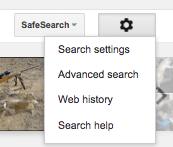 The whole concept of content marketing is changing how businesses value and approach many of the skills we freelancers most excel at. While the Content Marketing World conference is definitely not put together with freelancers top of mind, it provides a good glimpse into what our clients and potential clients are thinking about, the directions they’re moving in and the best ways we can provide the value they’re seeking.
The whole concept of content marketing is changing how businesses value and approach many of the skills we freelancers most excel at. While the Content Marketing World conference is definitely not put together with freelancers top of mind, it provides a good glimpse into what our clients and potential clients are thinking about, the directions they’re moving in and the best ways we can provide the value they’re seeking.
As a freelance writer, the tips I’ve shared below definitely lean towards lessons useful for freelance writers specifically, but many of these can be easily applied to freelancers working in any capacity related to content marketing. The growing importance of images and videos was a hot topic, and the need for well-designed websites has always been a crucial issue in content marketing.
Without further ado, here are 5 key takeaways for freelancers from this year’s Content Marketing World:
1) Marketers consider creating enough good content a big problem.
In advance of the conference, the Content Marketing Institute performed a survey to get a clear idea of what marketers are doing, and what tactics are working for them. 55% of those surveyed ranked producing enough content as one of the largest challenges they face.
Couple that number with the 58% planning to increase their content marketing budget over the next year and we’ve got some ripe conditions for quality freelancers to help fill in the gaps businesses are experiencing.
An important distinction here is that word “good” – marketers are bringing increasingly high standards to what constitutes content worth publishing. As the web becomes ever more saturated with content, we have to be able to bring our A-game to the clients we work with to help them develop the kind of content that helps a business stand apart from the crowd.
2) Content strategy is key for effectiveness.
This was another takeaway from the survey. The businesses that jump into content marketing without a plan get less out of it than those that develop a strategy.
While freelancers are often just one part of the larger content strategy for businesses, this is an important piece of information for us to impress upon any clients that aren’t thinking strategically. If we help them develop awesome content, but it’s not used effectively, we’re not really helping. Not to mention, we risk becoming a line item easy to cut out of their budget if our work doesn’t help them make money.
If we want to add value (as we should), we must urge clients to approach their content marketing with a bigger picture in mind.
3) Help out non-customers, even if you don’t see a direct benefit.
This point was emphasized again and again in different talks and sessions at the conference. Jay Baer, whose talk was one of the most popular there, urged the audience to “make marketing so useful, people would pay for it.”
Obviously, if you’re doing freelance work for pay, you’re already thinking that way 🙂
One of his other really meaningful points was to always think about how to help people in your audience, even if they’re not your customer. Good content marketing means thinking about offering value first, and making sales later.
Hilton created a Twitter account devoted to proactively giving travelers advice on different cities they visit – even people staying at other hotels. Lowe’s shares useful tips via Vine for people interested in home repair and gardening – including one that shows people how to make their own watering can (a tool Lowe’s sells).
Is it crazy to help your competitors’ customers, or tell people how to make the products you sell? Nope. It’s just good marketing.
4) Many businesses are looking for content that’s as good as journalism.
Bill Haggin and Nancy Pardo talked about their successful strategy running a blog for PTC. They made the recommendation to a crowded room of marketers to hire journalists for their blogs. This means:
a) Businesses are placing a value on blogging at a higher level than ever, and
b) They’re willing to pay good writers for journalism-level work.
This doesn’t just apply to writing, David Germano talk about treating your marketing like a media company. Andrew Davis compared content marketing to his previous profession creating kids shows. You have to think like the editors and media professionals whose job it is to entertain and educate an audience.
Having content doesn’t make businesses more competitive, having content that’s more helpful and informative does. We need to be thinking at that level in the work we provide clients.
5) Have personality!
Andrew Davis gave an example of a woman who built a massive following and successful makeup brand out of making short videos that had personality. Lauren Luke’s brief makeup tutorials on YouTube became massively popular. She didn’t spend any money on the videos, just brought a little time and personality to them.
You want people to care about and relate to your brand, which is harder for them to do if it feels like an entity without actual people behind it. Don’t be afraid of humor. Don’t be afraid of using a tone that’s more personal than professional.
If clients tend towards dry industry speak and buzzwords, try to steer them back around to the kind of language their customers actually speak. And don’t ever think any subject’s too dry or dull for some humor, Tim Washer shared some examples of companies that made dull subjects humorous. Who knew router hardware could be so fun?
As a final note, it’s worth mentioning that I came across many people who exclaimed “we really need more good writers!” or some variation of that phrase. While I hear many freelance writers concerned about finding good clients, those good clients are out there trying to figure out how to find us too.










